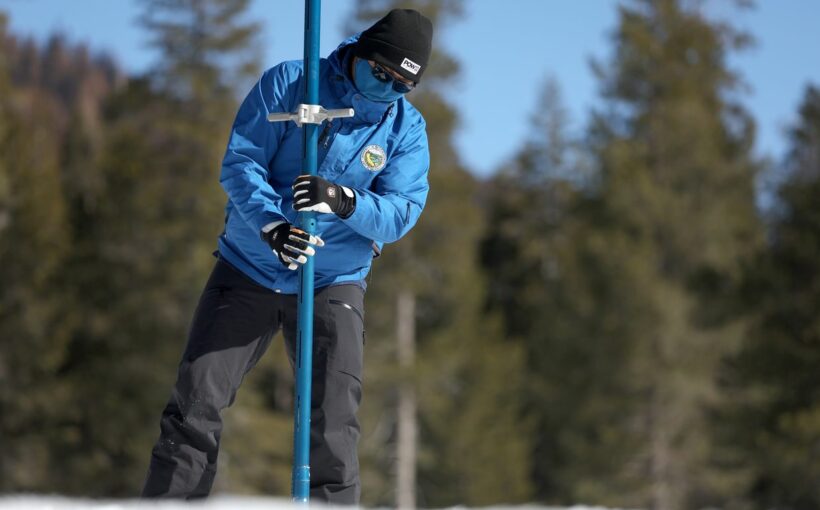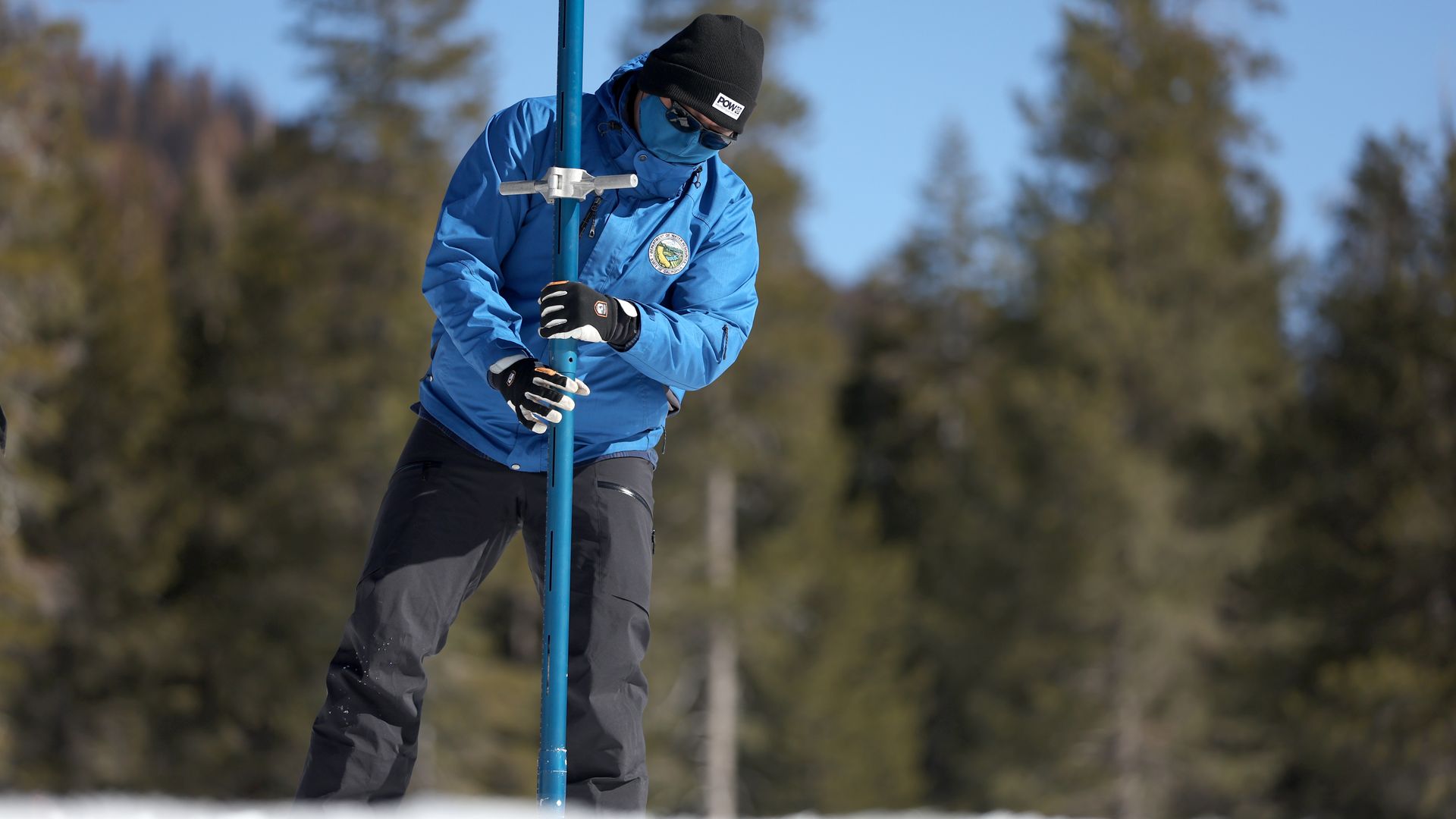Sean de Guzman takes a sample of the snowpack on Feb. 1 near Twin Bridges, Calif. Photo: Justin Sullivan/Getty Images
A "megadrought" that grips the Southwest has broken another record, according to a new study. The last 22 years now rank as the driest such period since at least 800 AD, with human emissions of greenhouse gases accounting for about 42% of the drought's severity.
The big picture: The new study updates findings from research published in 2020 that found evidence for the first partially human-caused megadrought in the Southwest, but noted that a drought in the 1500s rivaled its intensity and duration. That is no longer the case, the new research shows.
Driving the news: The study looks closely at the 2000 to 2021 period and finds that across southwestern North America, this period was the hottest and driest stretch since at least 1901.
- Human-caused climate change is increasing drought severity by increasing evaporation from the soils, vegetation and inland waterways.
- This is evident in soil moisture trends, among other indications of drought severity.
- The ongoing drought, the study says, "would not be on a megadrought trajectory in terms of severity or duration without [human-caused] climate change," the study states.
Between the lines: The study was published in 2000 and marked the first time human-induced climate change had been blamed for setting off a megadrought. It contained some hope that the drought was ending in 2019, thanks to more abundant rains.
- But dry conditions returned in 2020 and intensified through 2022. The year 2021 was about as dry as 2002, which was drier than any other year for more than three centuries.
- Even now, early winter hopes for drought recovery were dashed after record rains and mountain snows in December were followed by equally extreme dry conditions in December into February.
- California snow cover data released Monday shows that the statewide average snowpack declined from 160% in December to 73% as of Feb. 14. This indicates a rare mid-winter melt due to unusually mild temperatures and little to no precipitation.
Threat level: The ongoing drought is affecting water resources in the growing region. Last year, Lake Mead in Nevada hit a record low, which helped to trigger the first federal "water shortage" declaration for the Colorado River basin. This in turn set off water allocation reductions to several states.
What's next: The study cites previous work showing that human-caused climate change, largely due to the burning of fossil fuels, would raise the odds of long, widespread and severe region-wide megadroughts returning to the Southwest after a multi-century-long absence.
- The appearance of a 22-year-long drought so early, when the planet has only warmed by about 1.1°C (2°F), the study states, is an indication that "this worst-case scenario already appears to be coming to pass."
What they're saying: "It’s clear that at 22 years old, there is no evidence that the 2000s drought is starting to relent," said Park Williams, a climate scientist at UCLA and lead author of the new study, via email.
Go deeper: A very, very, very dry future for the U.S. West
Editor's note: This story originally ran on Feb. 14.
Source: Read Full Article

